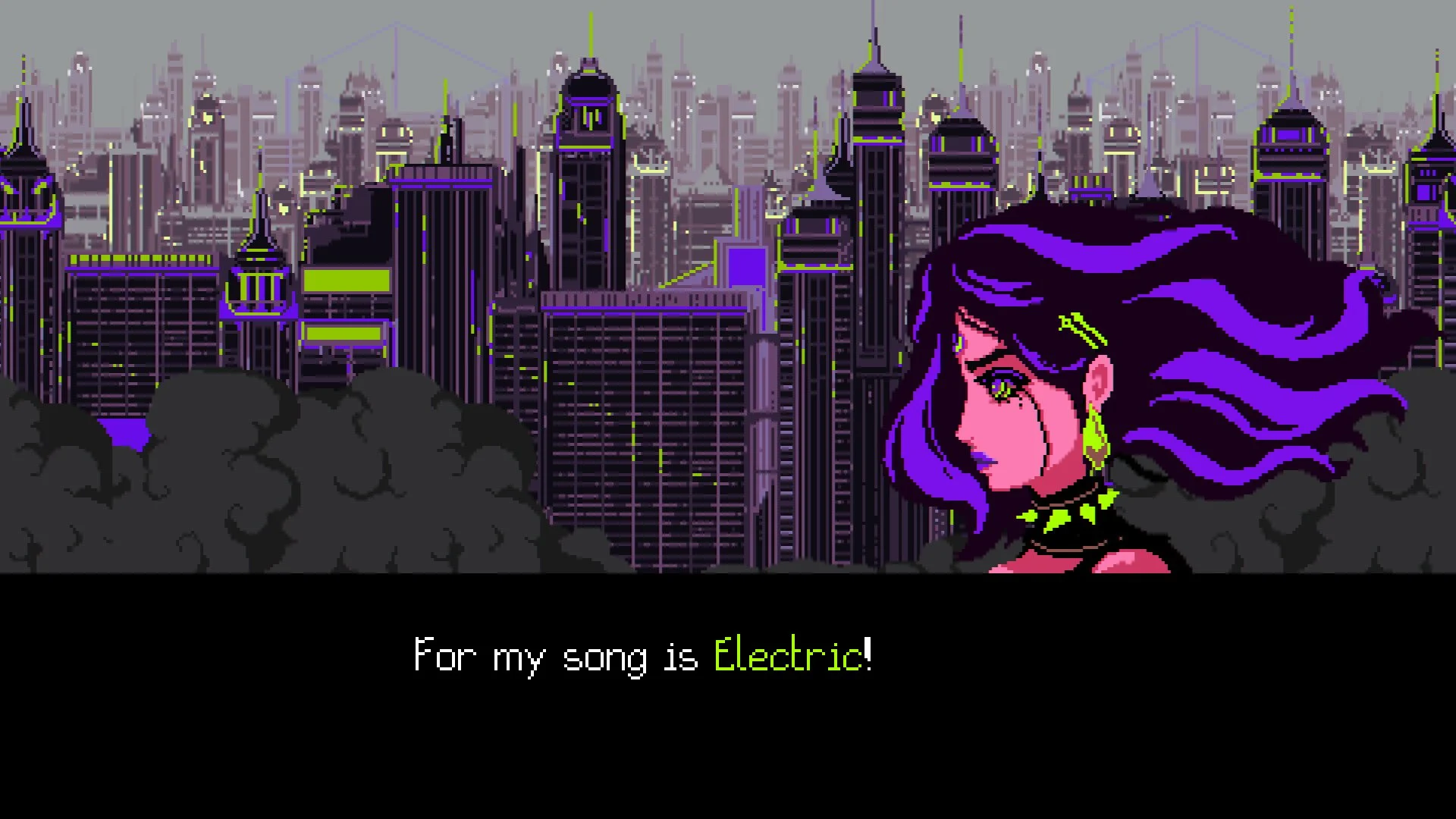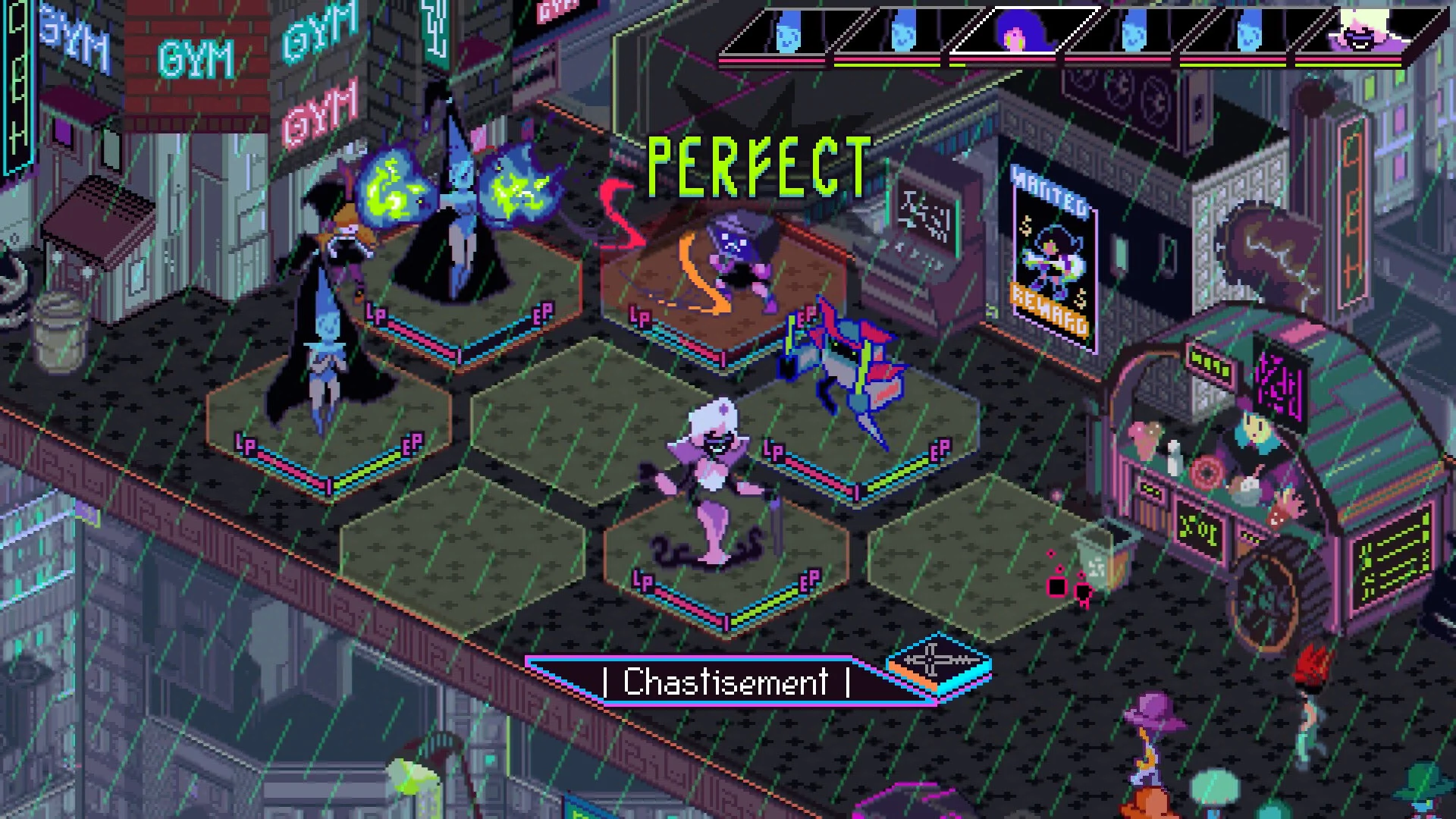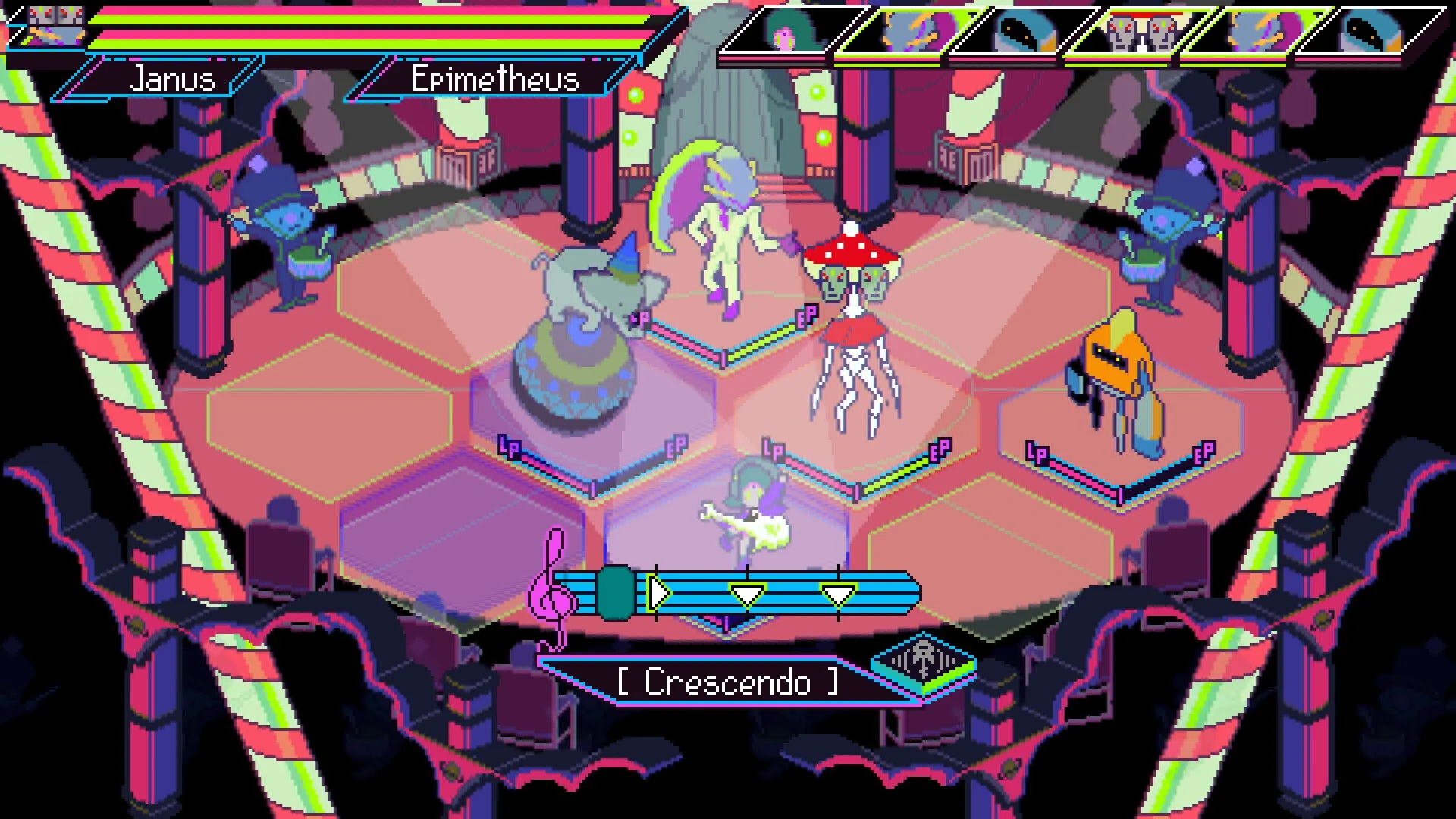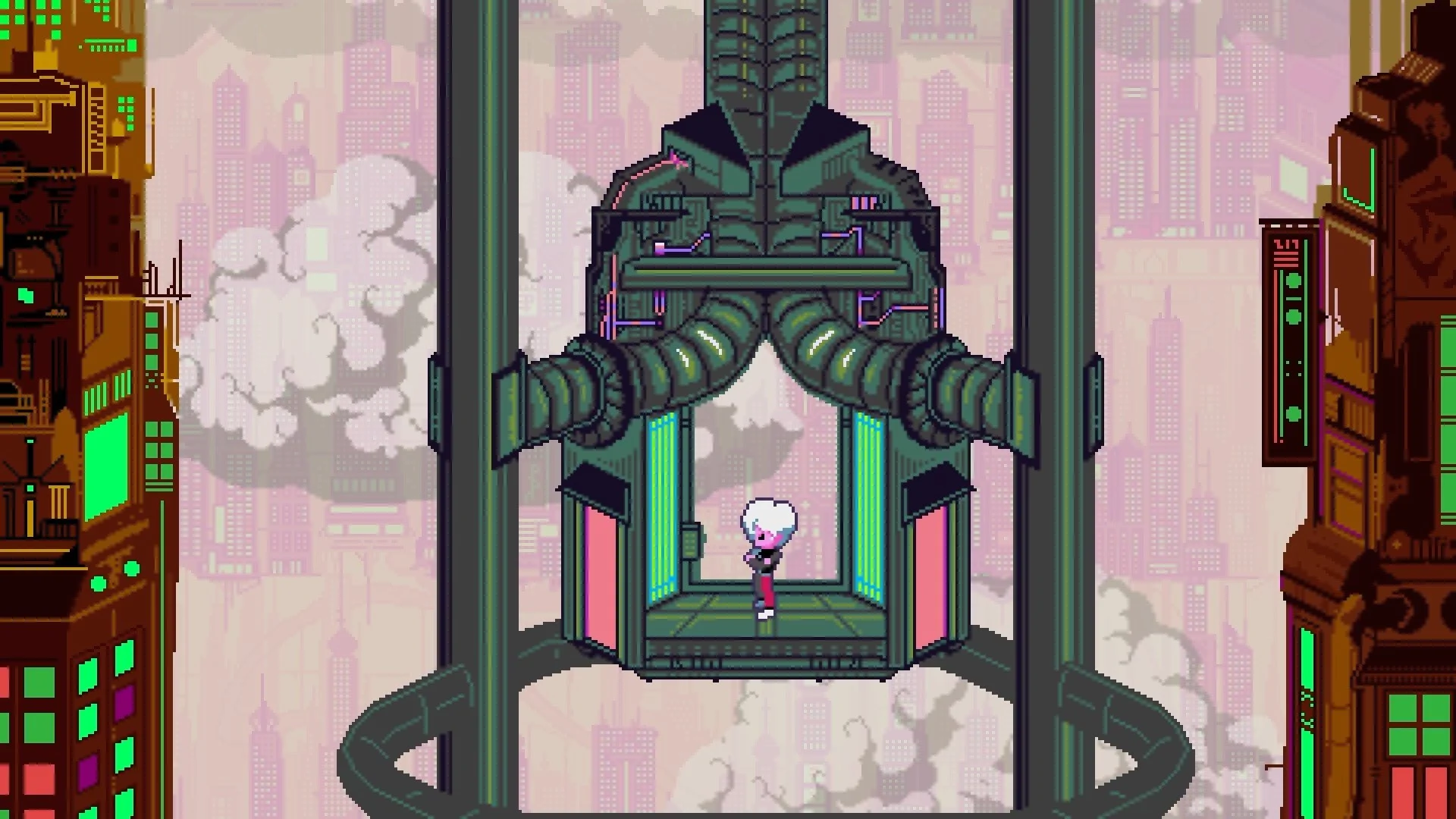Rebel Yell.
Throughout the years, it hasn't been uncommon to hear that a musician has been arrested. However, it’s another thing entirely for that reason being that singing is just illegal. However, as rocker-lass Bobo is sent to prison for that very charge, her escape will only fuel her desire to sing louder and take revenge on those who aim to silence music all together.
Keylocker follows the rebellious twins; Bobo and Dealer, as well as their robotic friend, Rocket; a semi-ancient music bot who can create their own melodies, as they attempt to take down the Saturnian Satellites, a hierarchy of gods who act as judge, jury, and executioner. However, when they are discovered to be just as mortal as Bobo and her brother, a rebellion is on the rise.
Taking place on a future Saturn, society is separated more or less into the haves and have-nots. The general idea is this; music is outlawed since it can create electricity, a commodity that the Satellites wish to control. This faction of rulers even saw fit to mute an entire city for their transgressions, ensuring their obedience is nothing but. Otherwise, this society is a mess of garbage dumps and cyberpunk utopias, each with characters that fit every cliche. Its colorful, vibrant, and loud, even if its people cannot even hum a simple melody.
If Keylocker has any unfortunate flaw, it is that the story and characters can be a bit hard to follow. I kept browsing the various menus, but a glossary or lore bible was just not present. While I grasped the general plot and who certain players were and where they fit into the story, I would have loved to have been able to deep dive into its lore. That said, I still found the story to be enjoyable, largely down to Bobo herself, a character that I really found fun to play around with.
As humanity is long gone, with cyborgs built in their image, Bobo and Dealer are known as Doppelgangers, a type of linked cyborgs made of anything but flesh. This future Saturn is full of weird creatures and numerous robotic treats, all looking for some way to scrape by. As Bobo and her friends are driven from their garbage dump of a home after their discovery that the Saturnian Satellites can be killed, something they discovered first-hand, they will escape with their lives to track the remaining Satellites down and kill them as well.
Keylocker’s main quest is generally that and while you’ll have a series of side quests and additions to the main narrative to take on, such as gathering ancient music boxes that will grant Bobo their melody, they aren't always satisfying. For example, there is a side quest to rob a bank. After meeting with your contact, you go up a ladder and enter through a side entrance, cause a distraction, hack the door through a mini-game, and that is more or less all you do after a few brief lines of dialogue with your client. Regardless, many of these quests are there to show more of who Bobo is, the relationship she has with some of the cast, and what she is capable of. The main quest will take Bobo to places she’s always dreamed of visiting or places she is warned to stay away from. Some locations are visually impressive, such as a data-corrupted forest, packed with interesting characters and things to see. However, navigating places like Soundwave City felt like an absolute chore.
The game’s opening hours have a sense of restraint that allows the freedom you are given to be funneled in a way where you naturally find where you need to go. If a quest says go west, you go west. However, Soundwave City is a nightmare of vague hints and dead ends as to where you need to go, and much of the design of its city causes you to get lost at every turn. For example, I wandered its streets for hours lost and unsure what a certain quest wanted from me. All it said was my last music box was somewhere up high. Little did I know I had to find a character on a ledge overlooking a building and start to put on a concert that would then allow me to enter into a building nearby.
Navigating Soundwave City is made worse by the fact that most of the interactive elements are no different than the background ones, making it tough to know what you can actually interact with or where to even go. Doors won't have an “enter” icon or visually be different from the hundreds of others that don't do anything. This is also true of trying to read the level design and determine if you can even traverse it. Some ledges or platforms could be walls or background elements that are twenty feet tall. The readability isn't consistent, and it has led to me being lost when the answer was often right in front of me. It’s a shame since some of the locations in this game are gorgeous with pixel art that stands at the top of the genre. Make no mistake about it, Keylocker is a very attractive game, especially on the OLED Switch.
However, despite that last bit of praise, playing it on the Switch came with some issues. First, the pixelated font and some of its UI are barely decipherable on the portable screen. In fact, to pass a hacking mini-game with Dealer, I had to play docked and play on my TV. I simply could not make out what buttons it wanted me to hit on the portable screen in the time it demanded of me. I cannot imagine playing this on the Switch Lite, it has got to be frustrating.
I also had a host of framerate issues during combat and the skill tree menu; however, it was bizarre that while Bobo and her allies and enemies were all sluggish and moving at a few frames per second, which threw off the timing of combat, the background elements were untouched by this technical blemish. It was bizarre. I also had an issue where the game was locked in widescreen, black bars cutting off the turn order in combat until I was able to reset the game. Thankfully, that only happened once. I also had a constant issue where unlocking skills would slow the game to a crawl. This even persisted when I would reset the game. Purchasing skills have a small animated icon. At first, this animation was quick, but eventually, it would play out at a single frame per second. Even as of this writing, it still does it.
Combat, however, is the game's best feature, even if I initially wasn't that into it. Combat uses a grid system where you’ll time the press of a button on each attack or block. Similar to the Mario and Luigi games on the Gameboy Advance and 3DS, you’ll take on enemies by increasing your attack power by timing them with a white flash. As enemies attack, you can negate all damage by doing the same. Each battleground will have a slightly different arrangement of tiles to move around in, with an equally changing assortment of enemies that each take to combat in different ways with a few tricks up their sleeve.
Bobo and each of her allies can be outfitted with different classes. At first, you’ll have options like the Juggernaut, Hacker, or Samurai. Each will handle combat through different means. Some will be far more offensive, while others will rely on defensive counters to deal out damage instead. Eventually, you’ll be able to tinker with advanced classes such as Metalhead, Attorney, or the Jester. While some classes simply didn’t work to my playstyle, the artwork for each of them is absolutely awesome. I’ll also mention that the descriptions of the classes are meant to make them each sound cool, but the text barely explains just exactly what the class actually does. The game does mention that certain story moments will change because of the class choice, but I’m unsure just exactly what changes from playthrough to playthrough apart from a few moments of dialogue I noticed for picking my starting class.
Each class will then have different attack patterns based on the weapon it has. You’ll also find new weapons to add to your skills as you can equip several different offensive and defensive skills. These attack patterns then require that you are placed in certain tiles in order to hit your enemy. You can also counter attacks that will then flash the tiles around you to show where that counter will trigger.
The Grids system, which is called Gradual Riot Inconveniences De-Escalation System, will usually see you taking on anywhere from two to four enemies, with some joining in as others are defeated. While you’ll have items to heal or cherry bombs to set certain tiles aflame, it is your hardware that will truly deal out damage. Enemies have health and EP, which is a type of armor. Some attacks will bypass armor and deplete health, but for the most part you’ll want to keep your EP up and ensure your team can bypass it as well, making short work of your foe.
Hardware ranges based on your class, but they are all generally music-based. From vinyl discs to old guitars, and trumpets, to drum kits, you’ll also have conventional weapons such as daggers, laser blasters, and shields; again, all dependent on the class combination you have chosen. For my Bobo, I usually used a Sulimans sH 2000 guitar and equipped two additional skills to it. First, every time I use this weapon, I gain back health. I also have a skill on it called echo that causes damage to nearby enemies should I perform a perfect hit. Each weapon or defensive option I have equipped to my characters has two skill slots to use, I simply have to unlock the skill to do so. Combine that with a blaster that does physical damage and has full range of every single enemy, and I have all my bases covered.
Skills are unlocked through keys. These are earned in battle as well as found as you explore. While a few skills can cost anywhere from five or ten, some of the more advanced skills can cost nearly a hundred, making you really save up. As you’ll have several skill trees to spend keys on, you’ll have to ensure you are spending them on the right skills. That said, some skills require that you have a certain level of a previous skill to even unlock the ability to purchase it.
Each character will have a range of stats to keep in mind and work on as you equip new weapons or apply new skills. From speed to EP recharge, you’ll also have specific resistances as well as influence, which increases the effect of skill programs. While upgrading your life points is crucial to being able to take damage, you’ll also want to ensure you have a high amount of EP as well as some enemies only damage that until it starts to affect your health.
For as enjoyable as the combat system can be and the depth you are given to customize your characters, it does have a few issues. The timing window for some attacks, both incoming and receiving can be extremely short, especially since you nearly have to press the button a frame before the white flash occurs. Enemies also don’t dictate what attack they are going to use in the turn order, making it a guess if that counter you have set down is even going to be used. I also had several grid placements where pillars and obstacles would be in the way, often blocking my health bar from view. This wasn’t a constant issue, but I am surprised this specific problem wasn’t noticed in development.
While a good portion of the enemy designs are pretty interesting, the bosses look extremely badass, especially the Satellites. The key art for them is something else, and the boss encounters play around with a few different moves that you generally don’t see elsewhere in the game. One of the first of these is against Tethys, the Sunken Siren. She fights alongside another boss, and the only way to damage them is to stand in a highlighted series of tiles around them, that is if you can get them to seperate. The catch is you take damage occupying those tiles, but both you and your teammate can then damage them even if only one of you are inside their range. Since Bobo healed on every attack, I eventually got them figured out. It made bosses feel like a challenge instead of just a different pixeled foe on the battlefield. While I'll be brief to not spoil one of the game's best encounters, it has Rocket and Bobo ripping across the freeway on a stolen motorbike.
While Keylocker is sort of marketed as a rhythm RPG, the music generally doesn’t integrate into combat in the way I had expected. Games like Metal Hellsinger have you attack to the beat, but Keylocker uses its music outside of combat to allow Bobo to rock out with her band. In fact, most of the music used in battle is quite and feint, feeling more like ambiance. This isn’t true of every encounter, but the bulk of them don’t quite bring the beat. The music moments of this game do shine however with a pretty great soundtrack. You’ll play a few moments with your band, rocking out to a Guitar Hero format that doesn’t have the responsiveness to it that I wanted from it. Regardless, the soundtrack is pretty damn good.
Keylocker has some gorgeous pixel art, a great soundtrack, and a deep enough combat system that I really enjoyed. That said, the level design and vague clues as to how to progress had me wandering so much of this game in the dark. The isometric angle causes a great deal of its art assets to not give you the awareness of what can be interacted with and where you can progress. These issues did sour some of my time with it and caused me to become frustrated with it despite loving so much of what is here. I think with a small amount of guidance to nudge you in the right direction, even if it was an option to opt into, would have helped greatly, taking what can often be an out-of-tune guitar into an instrument worthy of the gods.
Developer - Moonana.
Publisher - Serenity Forge, Moonana. Released - September 18th, 2024. Available On - PS4, PS5, Xbox One, Xbox Series X/S, Nintendo Switch, PC. Rated - (E 10+) - Fantasy Violence, Mild Blood, Mild Violence. Platform Reviewed - Nintendo Switch. (Mostly docked) Review Access - A review code was provided by the publisher for the purpose of this review.



















Jeff is the original founder of Analog Stick Gaming. His favorite games include The Witcher III, the Mass Effect Trilogy, Hi-Fi Rush, Stellar Blade, Hellbade: Senua’s Sacrifice, and the Legend of Heroes series, especially Trails of Cold Steel III & IV.